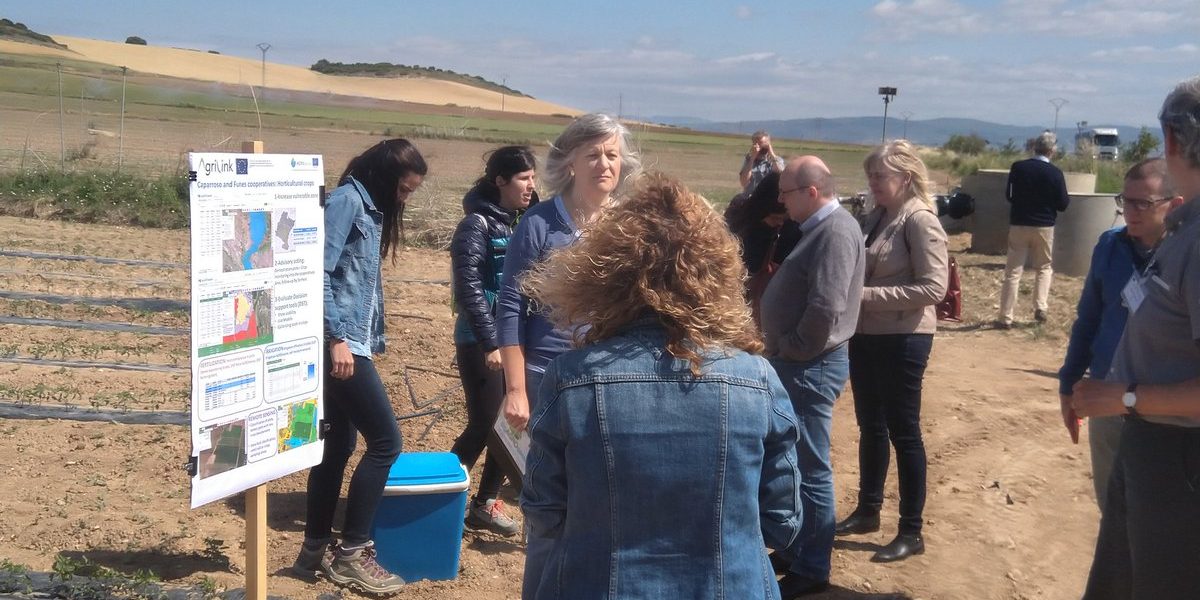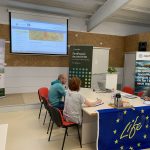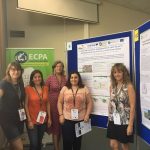June 13, 2019. Networking with the H2020 Agrilink Project
On June 13, 2019, coinciding with the 4th project meeting at the INTIA headquarters in Villava from June 12 to 14, 2019, the field visit of the H2020 Agrilink project was carried out to work on the Living Laboratories “Living Labs” “, In the Funes and Caparroso Cooperatives that participate in the project.
The objective pursued in the living Lab is to work together to find solutions to real problems. The idea is to collect suggestions and individual experiences to learn from each other and co-create a better solution.
In the case of Cooperativas de Caparroso and Funes, the problem addressed were vulnerable areas and nitrogen fertilization and irrigation. The area of these two cooperatives has been affected by new changes in legislation and is now considered a vulnerable area. In this new situation, it is necessary to evaluate the advisory system and the nitrogen and irrigation rates that must be controlled to comply with the required limits. Farmers are concerned about the consequences these changes may have for the productivity of their crops.
The HAD advisory tools Irrigation, nitrogen and remote sensing of the LIFE AGROgestor platform used by these cooperatives are presented as decision-making tools for both the technical advisors and the farmers themselves to provide solutions to the problems encountered with the declaration of that area as a vulnerable area.
The Agrilink Agrilink H2020 project is a multi-stakeholder project funded by the European Union’s Horizon 2020 research and innovation program. It brings together 16 partners (universities, public and private research institutes, consultants and consultants from public organizations, private SMEs, a farmer-based organization and specialists in communication and distance learning) from 13 European countries (Belgium, Czech Republic, France, Greece, Italy, Latvia, Holland, Norway, Poland, Portugal, Romania, Spain and the United Kingdom).
This project has been funded by the research and innovation program of the European Union Horizon 2020 under grant agreement No. 727577. Learn more




Leave a Reply